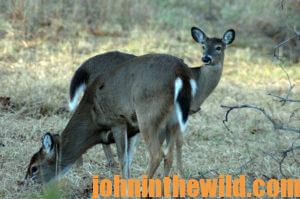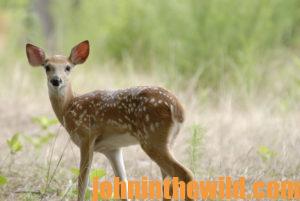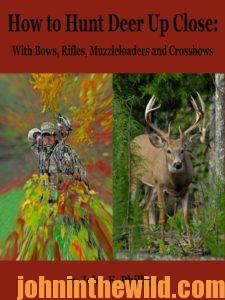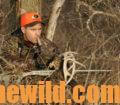Editor’s Note: Grunting, snorting, bleating and other deer sounds are hot tactics in deer hunting. There’s nothing mystical about deer calling – it’s simply using the sounds deer normally make in the woods to entice them to come near your stand. These techniques, even when mastered, aren’t a cure-all for hunting woes but are other strategies the serious, well-prepared hunter can pull from his bag of tricks to hunt smarter. What’s a hunter saying to a deer when he blows a call? What calls are the most effective? What is communicated by the different sounds that the hunter attempts to imitate? Almost every hunter and call manufacturer has speculated about these questions and their answers. Dr. Larry Marchinton, the former head of the University of Georgia’s Deer Research Project, shares his research on deer vocalization this week.
The Contact Call:
 “The contact call is given primarily by does and fawns of both sexes,” Marchinton explains. “This too is a type of grunt. But this contact call is longer than the threatening grunt and not quite as low as the other grunts. Rather, the contact call is higher-pitched, because it’s made by the does and fawns. The contact call seems to tell other deer, ‘I’m over here. Come, and find me.’ Quite often I’ve heard this call given by fawns that are separated from their does.
“The contact call is given primarily by does and fawns of both sexes,” Marchinton explains. “This too is a type of grunt. But this contact call is longer than the threatening grunt and not quite as low as the other grunts. Rather, the contact call is higher-pitched, because it’s made by the does and fawns. The contact call seems to tell other deer, ‘I’m over here. Come, and find me.’ Quite often I’ve heard this call given by fawns that are separated from their does.
“Scientists have learned that the grunt call in its various levels of intensity and different tones is used by deer to communicate many things at different times, which is perhaps one of the reasons that commercial grunt calls often tend to be so effective for hunters. Even if you give the wrong grunt call, you still may lure in the deer. For instance, if you intend to give a tending grunt, but don’t know the difference between a tending grunt and an aggressive grunt, and the sound you give communicates aggression, you still may call in a buck. However, instead of calling in a buck that may want to mate, you may call in a buck that prefers to fight, which is what makes deer calling so different from other types of animal calling. If you give the wrong call when you’re duck or turkey calling, more than likely you’ll spook the game – but not when calling deer.”
Fawn Calls:
“The mew is a high-pitched call that’s not as loud as the bleat,” Marchinton explains. “The mew seems to be a call that the fawn uses to solicit the attention of the doe. Also a juvenile utilizes the mew to keep from getting lost or just to be recognized. The bleat is louder and longer than the mew and much-more intense. The fawns often will use the bleat when they want to feed. The bleat is quite similar to a contact call and is often used by the hunter to say to the deer, ‘Hello, I’m over here. Come, and find me.’ The nursing whine is a sound fawns vocalize when they’re nursing, or when they want to nurse.”
 To learn more about hunting deer, check out John E. Phillips’ book, available in Kindle, print and Audible versions, “How to Hunt Deer Up Close: With Bows, Rifles, Muzzleloaders and Crossbows” (http://amzn.to/11dJRu8).
To learn more about hunting deer, check out John E. Phillips’ book, available in Kindle, print and Audible versions, “How to Hunt Deer Up Close: With Bows, Rifles, Muzzleloaders and Crossbows” (http://amzn.to/11dJRu8).
Tomorrow: What Techniques Call Deer










